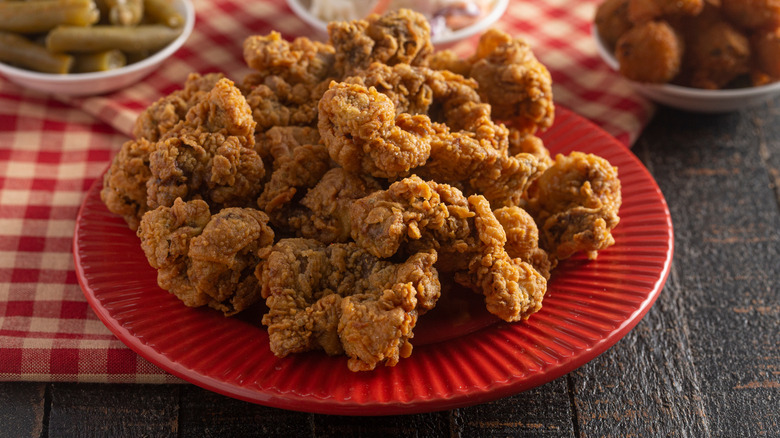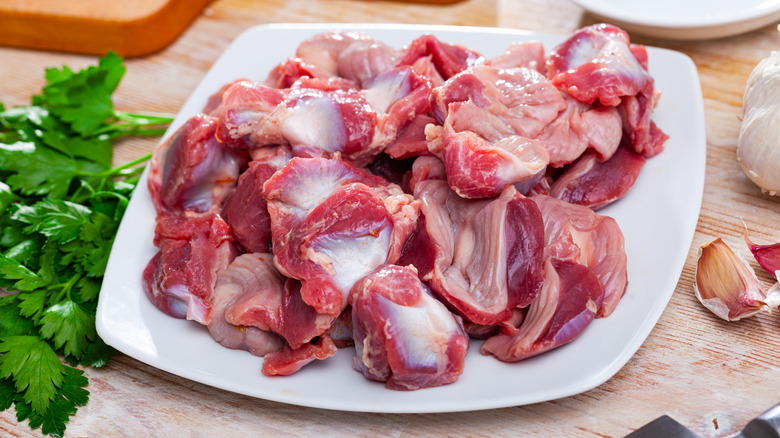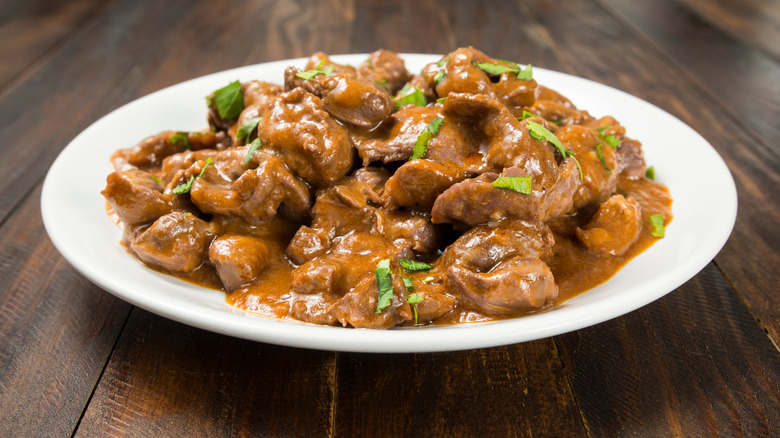What To Keep In Mind Before Trying To Cook Chicken Gizzards
Chicken gizzards are a rare treat in some parts of the world. In others, they're a common sight on dinner tables and in restaurants and bars. For those unfamiliar with chicken anatomy, the muscular organ is something like a stomach, allowing chickens to grind their feed before digesting it. Gizzards are just one of many "giblets" you might find inside a bird, including other organs like the liver, heart, and kidneys.
Gizzards are particularly popular in Southeast Asia, Africa, and the southern United States, where they're served in a variety of ways, from pickled to fried. Like other organ meats, gizzards are full of nutritional value, including plenty of protein, iron, and vitamin B12. They're also low in fat, not to mention low-cost. On average, gizzards cost less than $2 per pound.
Curious about how to cook this organ at home? As with any organ meat, proper preparation is key.
Prepare gizzards carefully for best results
Internal organs tend to hold strong, gamey flavors, especially organs that are along the digestive tract or those that act as filters.
If you've bought unbutchered gizzards, the first step is to split them in half and give each a thorough washing. The gizzard is especially important to wash because chickens will often ingest dirt or small stones while pecking for feed. Those stones can get caught in the gizzard, resulting in a painful surprise for your teeth if you're not careful. Check for grit with your fingers before proceeding.
After everything is clean and ready to go, move in with a paring knife or a pair of kitchen shears and remove the yellow lining from the interior of the gizzard. This part of the organ is sometimes saved for medicinal purposes, but if you don't plan on repurposing them, you can discard them.
Braise or fry for maximum deliciousness
Gizzards are a hardworking organ with a lot of connective tissue. Hitting them with direct, fast heat will seize them up and result in a chewy final product.
The trick is to braise them first, cooking them low and slow over the course of several hours until the tissues relax and the meat begins to break down. You can braise them in water with aromatics such as onion and celery, or use chicken stock and a splash of white wine. Braising should take as long as 2 hours on the stovetop, or until the gizzards become soft and tender. Be sure to keep the organs at a low, slow simmer; boiling them will cause them to seize. You can also cook the gizzards in a slow cooker for approximately 8 hours on low heat.
Once they've been braised, the gizzards are ready for your preferred preparation. Bread and deep-fry them, chop them up and add them to rice dishes or soups, or pan-fry them in butter with onions.


